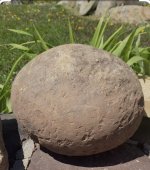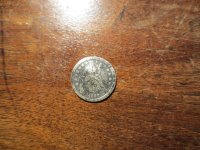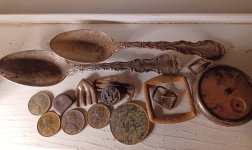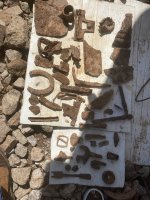Nitric
Silver Member
Ok, another Question! 
Sampling or deposit evaluating?
I don't know the terms and I'm trying to search for information on every detail of how this is done. I have a basic understanding. I want to know more. I'm looking for more on a large scale. I understand they core drill to get samples and averages, that's all I know. I also have a basic understanding of creek sampling with a pan.
But, I know a major company doesn't walk around with a pan and find some gold, then bring in millions of dollars of equipment!
I want to know more, and don't know the terms or what it is that I'm looking for in wording for a search. There has to be a process and formulas for doing this. What's it called? What field would this be considered? A type of surveying I guess? I'm guessing it's done on a grid at different depths to follow out the deposit? I'm sure soil is done different than rock.
I'm sure soil is done different than rock.
This would be done for everything not just gold.

Sampling or deposit evaluating?
I don't know the terms and I'm trying to search for information on every detail of how this is done. I have a basic understanding. I want to know more. I'm looking for more on a large scale. I understand they core drill to get samples and averages, that's all I know. I also have a basic understanding of creek sampling with a pan.
But, I know a major company doesn't walk around with a pan and find some gold, then bring in millions of dollars of equipment!
I want to know more, and don't know the terms or what it is that I'm looking for in wording for a search. There has to be a process and formulas for doing this. What's it called? What field would this be considered? A type of surveying I guess? I'm guessing it's done on a grid at different depths to follow out the deposit?
 I'm sure soil is done different than rock.
I'm sure soil is done different than rock. This would be done for everything not just gold.
Amazon Forum Fav 👍
Last edited:
Upvote
0


 Hehh what really keyed me off to read up on it were the holes themselves. The drillers often left different colored piles of samples in neat little lines or boxes near the hole. I then read, actually tried to read, a few drill reports. That was a headache and it got worse trying to tie them to geology reports. Have fun with the reading... me I'll stick with potholes, pans and mapping
Hehh what really keyed me off to read up on it were the holes themselves. The drillers often left different colored piles of samples in neat little lines or boxes near the hole. I then read, actually tried to read, a few drill reports. That was a headache and it got worse trying to tie them to geology reports. Have fun with the reading... me I'll stick with potholes, pans and mapping 







